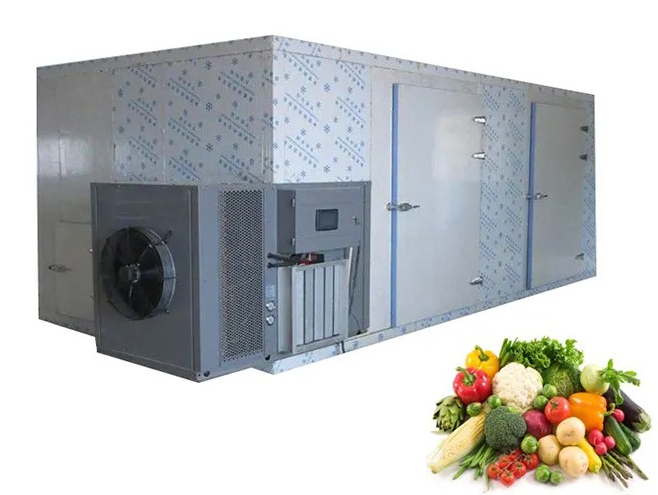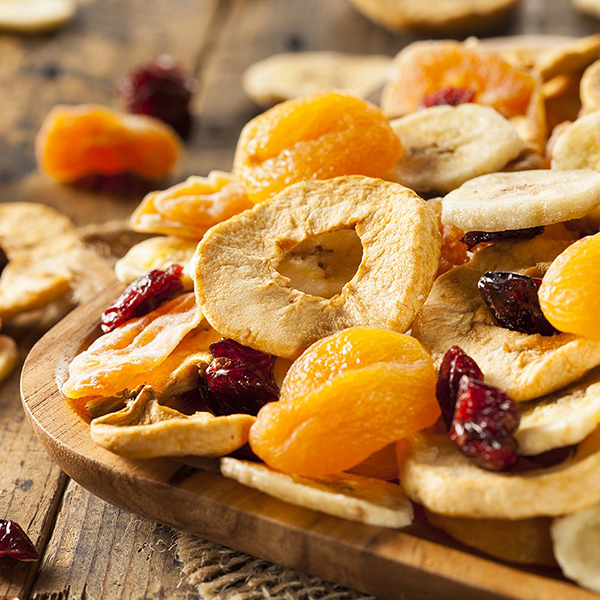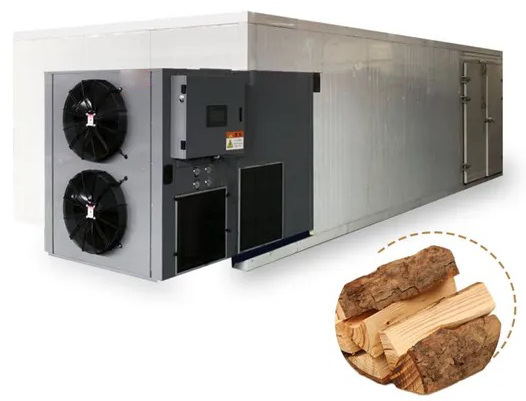
Content Menu
● Understanding Heat Pump Dryers
>> What is a Heat Pump Dryer?
>> Advantages of Heat Pump Dryers:
● Key Factors to Consider When Choosing a Compact Stackable Heat Pump Dryer
>> 1. Capacity Requirements
>> 2. Energy Efficiency Ratings
>> 3. Space Considerations
>> 4. Temperature Control Features
>> 5. Airflow Design
● Benefits of Using Compact Stackable Heat Pump Dryers in Food Processing
● Applications of Compact Stackable Heat Pump Dryers
● Maintenance Tips for Compact Stackable Heat Pump Dryers
● Innovations in Heat Pump Dryer Technology
● Conclusion
● FAQ
>> 1. What types of foods can be dried using a heat pump dryer?
>> 2. How does a heat pump dryer differ from traditional dryers?
>> 3. What maintenance is required for a compact stackable heat pump dryer?
>> 4. Can I use a heat pump dryer in small spaces?
>> 5. How do I determine the right capacity for my needs?
● Citations:
In the food processing industry, particularly in the production of dried foods, choosing the right equipment is paramount. Among the various machines available, the compact stackable heat pump dryer stands out for its efficiency and versatility. This article will guide you through the essential factors to consider when selecting a compact stackable heat pump dryer for your company, focusing on its applications in food drying.

Understanding Heat Pump Dryers
What is a Heat Pump Dryer?
A heat pump dryer is an advanced drying system that utilizes heat pump technology to remove moisture from food products. Unlike traditional dryers that expel hot air, heat pump dryers recycle air within the unit, making them energy-efficient and environmentally friendly. They work by extracting moisture from the food and condensing it into water, which is then drained away.
Advantages of Heat Pump Dryers:
- Energy Efficiency: Heat pump dryers consume significantly less energy compared to conventional dryers.
- Gentle Drying: They operate at lower temperatures, which helps preserve the quality and nutritional value of food.
- Versatility: Suitable for a wide range of products including fruits, vegetables, meats, and herbs.
Key Factors to Consider When Choosing a Compact Stackable Heat Pump Dryer
When selecting a compact stackable heat pump dryer for your food processing needs, consider the following factors:
1. Capacity Requirements
Evaluate your production needs to determine the appropriate capacity. Compact stackable dryers come in various sizes, so it's crucial to select one that can handle your expected volume of dried products without compromising efficiency.
For example, if your company plans to process large batches of fruits or vegetables daily, you may need a model with a higher capacity to ensure timely production. Conversely, smaller operations may benefit from models with lower capacities that still provide excellent drying results.
2. Energy Efficiency Ratings
Look for models with high energy efficiency ratings. A good heat pump dryer should reduce energy consumption by at least 28% compared to standard dryers. Check for certifications that indicate energy savings.
Many manufacturers provide detailed specifications about energy consumption and efficiency ratings in their product literature. Comparing these ratings across different models will help you make an informed choice that aligns with your sustainability goals.
3. Space Considerations
Compact stackable dryers are designed for small spaces, making them ideal for facilities with limited floor area. Ensure that the dimensions fit within your production area while allowing enough space for maintenance and operation.
Additionally, consider how the dryer will fit into your existing workflow. A well-planned layout can enhance efficiency and reduce bottlenecks in production.
4. Temperature Control Features
Different types of food require specific drying temperatures. A model with adjustable temperature settings ensures that you can dry various products effectively without damaging their quality.
For instance, delicate items like herbs may require lower temperatures to preserve their flavor and color, while sturdier items like meats may tolerate higher temperatures. Having precise control over these settings can significantly affect the final product quality.
5. Airflow Design
The design of airflow in a dryer impacts drying efficiency. Look for models with horizontal airflow systems as they provide more uniform drying results compared to vertical airflow systems.
Uniform airflow helps prevent hotspots and ensures that all parts of the food receive equal exposure to warm air, leading to consistent drying results across batches.

Benefits of Using Compact Stackable Heat Pump Dryers in Food Processing
Integrating compact stackable heat pump dryers into your food processing line offers several benefits:
- Improved Product Quality: The gentle drying process helps retain flavor, color, and nutrients in dried foods.
- Reduced Operating Costs: With lower energy consumption and improved drying efficiency, your overall operational costs can decrease significantly.
- Flexibility in Production: Compact designs allow easy integration into existing workflows without requiring extensive modifications to your facility layout.
- Environmental Sustainability: By using less energy and reducing waste through efficient moisture removal, these dryers contribute positively to environmental sustainability efforts within your company.
Applications of Compact Stackable Heat Pump Dryers
Compact stackable heat pump dryers are versatile machines suitable for various applications in food processing:
- Fruit Drying: Ideal for producing dried fruits like apples, bananas, and apricots while preserving their natural sweetness and nutritional content.
- Vegetable Drying: Effective for dehydrating vegetables such as carrots, bell peppers, and mushrooms; this process extends shelf life and enhances flavors in soups and stews.
- Herb Drying: Perfect for retaining essential oils and flavors in herbs like basil, thyme, and oregano; gentle drying prevents loss of aroma.
- Meat Drying: Suitable for making jerky or dried meat products while ensuring safety by maintaining proper temperatures during the drying process.
Maintenance Tips for Compact Stackable Heat Pump Dryers
To ensure longevity and optimal performance of your heat pump dryer, regular maintenance is essential:
- Clean Filters Regularly: Clogged filters can reduce efficiency and increase energy consumption. Establish a routine cleaning schedule based on usage frequency.
- Inspect Seals and Gaskets: Ensure that all seals are intact to prevent air leaks which can affect drying performance. Replace any worn-out seals promptly.
- Schedule Professional Servicing: Regular check-ups by qualified technicians can help identify potential issues before they become significant problems. This proactive approach can save costs associated with major repairs down the line.
- Monitor Performance Metrics: Keep track of key performance indicators such as drying time and energy consumption to identify any deviations from normal operation that may indicate maintenance needs.
Innovations in Heat Pump Dryer Technology
The field of heat pump dryer technology is continually evolving. Recent innovations include:
- Smart Technology Integration: Many modern units now feature smart technology that allows remote monitoring and control via mobile devices. This capability enables operators to adjust settings on-the-go and receive alerts about maintenance needs or performance issues.
- Enhanced Energy Recovery Systems: Newer models incorporate advanced energy recovery systems that further improve efficiency by reusing heat generated during the drying process.
- Modular Designs: Some manufacturers offer modular designs that allow businesses to scale their operations easily by adding additional units as production demands grow without requiring significant changes to existing setups.
Conclusion
Choosing the right compact stackable heat pump dryer is crucial for enhancing your food processing capabilities. By considering capacity requirements, energy efficiency, space constraints, temperature control features, and airflow design, you can make an informed decision that aligns with your production goals. The benefits of improved product quality and reduced operating costs make these dryers an excellent investment for any food processing facility.

FAQ
1. What types of foods can be dried using a heat pump dryer?
Heat pump dryers are versatile and can effectively dry fruits, vegetables, meats, herbs, and even prepared meals like soups or sauces.
2. How does a heat pump dryer differ from traditional dryers?
Heat pump dryers recycle air within the unit and operate at lower temperatures compared to traditional dryers which expel hot air, making them more energy-efficient and better for preserving food quality.
3. What maintenance is required for a compact stackable heat pump dryer?
Regular maintenance includes cleaning filters, inspecting seals and gaskets for leaks, and scheduling professional servicing to ensure optimal performance.
4. Can I use a heat pump dryer in small spaces?
Yes! Compact stackable heat pump dryers are specifically designed to fit into smaller spaces while still providing effective drying capabilities.
5. How do I determine the right capacity for my needs?
Assess your production volume requirements based on the types of foods you plan to dry and select a model that meets or exceeds those needs without overloading the machine.
Citations:
[1] https://www.backpackingchef.com/dehydrating-food.html
[2] https://www.dehydratefood.info/how-to-choose-a-food-dehydrator/
[3] https://www.midea.com/us/laundry/dryers-electric/midea-mle25h7bww-heat-pump-ventless-front-load-dryer-stackable
[4] https://www.bestbuy.com/site/shop/compact-stackable-washer-dryer
[5] https://www.youtube.com/watch?v=aUnAt7d_hMw
[6] https://extension.umn.edu/preserving-and-preparing/drying-food
[7] https://thruhikers.co/dehydrators/
[8] https://www.youtube.com/watch?v=1GG-CcwQiTM
[9] https://homesteadingfamily.com/preservation-101-intro-to-dehydrating-food/











